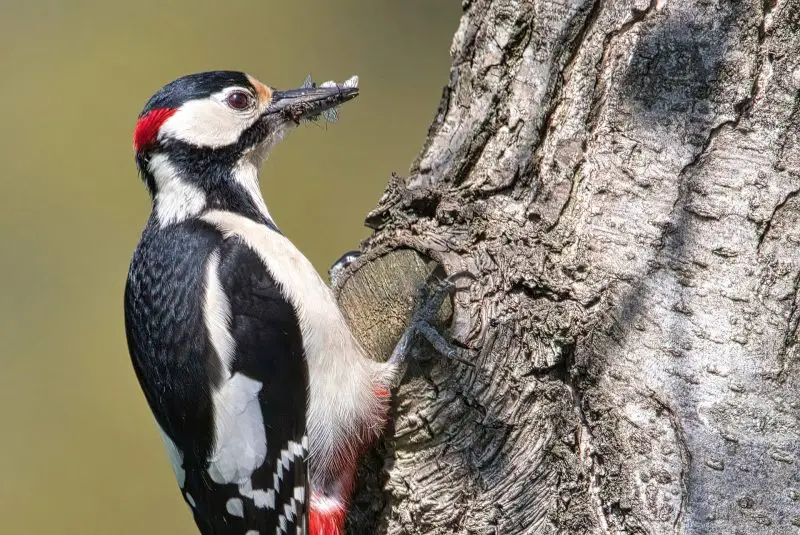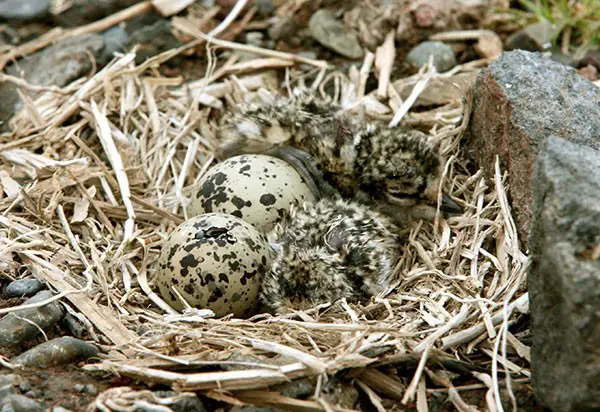Woodpeckers are among the most remarkable examples of evolutionary innovation in birds. Known for their rhythmic drumming, vibrant plumage, and arboreal acrobatics, these birds undergo a complex developmental journey shaped by anatomical precision and behavioral learning. Understanding their development offers deep insights into how structure and function evolve in tandem within a specific ecological niche.

The Egg Stage: The Beginning of a Drummer’s Journey
The life of a woodpecker begins in a cavity nest meticulously excavated by one or both parents, usually in soft, decaying wood. These cavities are not just physical shelters; they represent a thermally stable, predator-resistant microenvironment essential for early embryonic growth. Woodpeckers typically lay 3 to 8 small, white eggs. Their lack of pigment is an adaptation to the dark interior of the cavity, where camouflage from predators is unnecessary.

Incubation, which lasts from 10 to 14 days, is shared between both parents. During this period, embryonic development accelerates, with early signs of cranial reinforcement already observable in the skull cartilage, an essential precursor to the shock-absorbing structures that will define the adult bird.
Hatchlings: Fragile Beginnings, Hidden Potential
Woodpecker hatchlings begin life in an altricial state—helpless, blind, featherless, and completely reliant on their parents for warmth, protection, and nutrition. But while their outward appearance suggests vulnerability, an astonishing transformation is taking place beneath the surface. Within just days of hatching, these tiny chicks initiate a cascade of highly coordinated developmental processes, each one finely tuned by millions of years of evolutionary refinement.
One of the most remarkable aspects of this early growth is the formation of the cranial architecture. The skull is initially soft and flexible to accommodate rapid expansion, but embedded within it are cartilaginous templates that mark the beginning of the cranial spongiosa—a specialized, shock-absorbing bone matrix that will one day protect the brain from the extreme forces of woodpecking. The fact that this biomechanical adaptation begins forming so early underscores how deeply integrated it is into the species’ survival strategy.
At the same time, the chicks receive regurgitated meals from both parents, consisting of protein-rich insects, larvae, and nutrient-laden tree sap. This diet fuels more than just physical growth—it powers the rapid formation of neural pathways, particularly in regions of the brain involved in motor coordination, balance, and spatial perception. The early development of visual-motor circuits is crucial, as adult woodpeckers rely on impeccable timing and positioning to climb vertical surfaces and strike precise blows with their beaks.
Every system—skeletal, muscular, neural—is developing not in isolation but in synchrony, orchestrating a metamorphosis that will turn a featherless, immobile chick into a nimble, tree-climbing, percussion-drumming adult. It is a profound example of how evolution shapes not just the adult form, but every step leading up to it, embedding function and survival into the very blueprints of early development.
Feather Growth, Musculature, and Motor Skills
By the second and third weeks of life, woodpecker chicks undergo a dramatic transformation marked by synchronized physical and neurological development. Their eyes open, allowing visual input to begin shaping the brain’s sensorimotor circuits. Feathers start to emerge, not only aiding insulation but enabling the chick to regulate its body temperature—an essential step toward self-sufficiency. At the same time, neck and thoracic muscles enlarge, laying the foundation for two signature behaviors of woodpeckers: vertical perching and forceful pecking.
One of the most unique anatomical features to take shape is the zygodactyl foot structure, in which two toes face forward and two face backward. This specialized toe arrangement significantly enhances gripping strength and stability on rough, vertical surfaces like tree bark. Meanwhile, tail feathers stiffen, functioning as a structural prop that allows the bird to lean back and brace its body during vertical climbing.
Perhaps most fascinating is the development of the elongated hyoid bones—a pair of flexible bones that begin to curve around the skull, eventually forming a sling-like apparatus. In adult woodpeckers, this hyoid structure supports tongue extension far beyond the beak, essential for extracting insects from crevices. But even in juveniles, its early formation contributes to cranial reinforcement, helping to absorb the mechanical shock of future drumming behaviors.
Simultaneously, key neurological regions undergo intense maturation. The cerebellum, responsible for balance and fine motor control, becomes densely wired. The forebrain motor cortex begins establishing complex neural connections essential for precision, timing, and rhythmic movement. These developments are not merely structural—they form the neurological blueprint that enables the woodpecker’s extraordinary motor abilities, from targeted pecking to tree-to-tree navigation.
This tightly coordinated progression—from skeletal specialization and feather growth to muscular adaptation and brain circuitry—reveals a level of developmental sophistication that is nothing short of extraordinary. Every stage is purpose-built, not just for survival, but for mastering one of the most extreme and specialized foraging behaviors in the avian world.
Fledging: Exploration and Experimentation
Between 25 and 30 days after hatching, juvenile woodpeckers enter a pivotal developmental stage: fledging. Now capable of sustained flight, these young birds leave the nest cavity for the first time. While their wings can carry them, their motor control, spatial awareness, and foraging skills remain in their infancy. Under the close supervision of their parents, fledglings begin a period of intensive environmental exploration. During this time, they practice essential behaviors: identifying food sources, navigating tree trunks, and initiating the complex action of pecking.
One of the most fascinating behaviors to emerge during this stage is early drumming. Juvenile woodpeckers often mimic the rhythmic signals of adults, though these attempts initially lack both precision and force. The patterns are irregular and subdued, but through trial-and-error, parental feedback, and social observation, these signals gradually become more refined. This learning is not merely behavioral—it reflects ongoing changes within the brain.
At the neural level, this period is marked by heightened synaptic plasticity. Repetitive practice strengthens the connections between neurons in the motor cortex, cerebellum, and auditory regions, reinforcing both motor memory and sensory associations. The brain is essentially sculpted by experience: each climb, each peck, and each successful food discovery contributes to the calibration of muscle movement, balance, and environmental mapping.
This post-fledging phase is thus not just about survival—it is the bridge between innate instinct and functional mastery. It exemplifies how learning in woodpeckers is deeply embedded in both neural development and social context, ensuring that the next generation inherits not only genetic blueprints but also the behavioral tools for life in the vertical world of trees.
Maturation: Behavioral and Anatomical Finalization
Most woodpeckers attain full physical and behavioral maturity by the time of their first breeding season, typically between 9 and 12 months after hatching. At this stage, their cranial architecture is fully developed: the skull has undergone complete ossification, becoming dense and rigid to withstand the forces of repetitive impact. Meanwhile, the hyoid bone—an extraordinary anatomical adaptation—has elongated into a full loop around the skull, often threading between the eyes or wrapping behind the head. This specialized structure acts like a natural safety harness, absorbing shock and anchoring the brain during the intense vibrations caused by drumming and excavation.
With their anatomy now suited to the demands of their ecological niche, adult behaviors begin to emerge. These include cavity excavation for nesting, food caching in species such as the Acorn Woodpecker, and the execution of complex, species-specific drumming patterns. These behaviors are not purely hardwired instincts—they reflect a dynamic interplay between innate tendencies, individual learning, habitat conditions, and social interaction.
Over time, woodpeckers refine their techniques through practice and environmental feedback. For example, the rhythm and intensity of drumming can change depending on the type of wood, territorial context, or nearby rivals. Likewise, the choice of nesting sites or food storage locations often improves with experience and spatial memory. These patterns illustrate how behavioral plasticity complements anatomical specialization, enabling woodpeckers to thrive in diverse and changing habitats.
Skull Structure: The Ultimate Shock-Absorbing System
The woodpecker’s skull stands as one of nature’s most extraordinary biomechanical systems. Unlike typical avian skulls designed for minimal weight and flight efficiency, the woodpecker’s skull is dense, compact, and structurally reinforced to withstand repeated high-impact forces. During each peck, the bird experiences decelerations exceeding 1,000 g—a force that would cause severe brain trauma in most animals. Yet, woodpeckers suffer no injury, thanks to a suite of integrated shock-absorbing adaptations.
At the core of this resilience is the spongiosa, a highly porous layer of bone interlaced with trabecular struts. These internal supports behave like a dynamic cushion, deforming elastically to absorb and disperse mechanical stress before it can reach the brain. This spongy bone matrix works in tandem with the skull’s rigid outer casing, forming a dual-layered system optimized for energy dissipation rather than simple resistance.
Equally vital is the hyoid apparatus—a unique skeletal extension that originates at the base of the tongue and wraps around the skull like a biological suspension cable. As the woodpecker drives its beak into wood, this hyoid loop contracts, stretches, and recoils, diverting vibrational energy away from the cranial cavity. It functions much like a seatbelt or shock-absorber, safeguarding neural tissues from the cumulative impact of drumming.
The beak structure itself is also finely tuned for energy management. Rather than being perfectly symmetrical, the upper (maxilla) and lower (mandible) beaks exhibit slight asymmetry, which redirects force slightly downward and away from the braincase. The outer sheath, made of keratin, is extremely hard, while the internal core is softer and more flexible—working together like a natural crash helmet, rigid on the outside but capable of absorbing shock internally.
Together, these anatomical innovations form a highly evolved, multi-component system that enables the woodpecker to endure thousands of pecks per day without concussion or structural damage. It’s a testament to evolutionary biomechanics, demonstrating how form and function converge in perfect synergy to solve one of nature’s most extreme physical challenges.
Brain Development: Small but Exceptionally Engineered
Though relatively small compared to body size, the woodpecker’s brain is a finely tuned organ adapted for both impact resistance and motor precision. It sits tightly packed within the skull, surrounded by minimal cerebrospinal fluid—a critical feature that limits brain movement and reduces the risk of concussive injury during repetitive pecking. Anatomically, the frontal cortex and cerebellum are especially prominent. The frontal cortex governs behavioral flexibility and decision-making, while the cerebellum controls timing, balance, and fine motor coordination—functions essential for drumming, climbing, and foraging with pinpoint accuracy.
During the juvenile development phase, the maturation of auditory processing centers becomes particularly vital. Young woodpeckers must learn to differentiate the acoustic signatures of their own drumming from surrounding environmental noise—a task requiring refined sound discrimination and feedback interpretation. This learning process closely mirrors that of songbirds acquiring vocalizations. It relies on repetition, error correction, and social mimicry, enabling the bird to fine-tune its drumming rhythm and communicate effectively with conspecifics.
In some species, such as the Acorn Woodpecker, cognitive demands extend far beyond motor skills and drumming. These birds exhibit remarkable spatial memory, capable of remembering the precise locations of hundreds or even thousands of acorns stored in communal granaries. In addition, they navigate complex social hierarchies, demonstrating elements of social intelligence—such as cooperative breeding, role recognition, and conflict resolution.
This combination of neural specialization, sensorimotor learning, and cognitive adaptability reflects a brain designed not only to endure extreme physical challenges but also to master behavioral complexity. The woodpecker is, in essence, both a precision instrument and a thinking machine—evolved to thrive in vertical landscapes through a blend of instinct, memory, and experience.
Comparative Insights: Woodpeckers vs. Other Birds
Woodpeckers represent a striking departure from the standard avian developmental blueprint. In most bird species, key processes such as skull ossification, motor coordination, and neural maturation continue well after hatching. In woodpeckers, however, these processes begin earlier and progress more rapidly. This accelerated timeline reflects a unique evolutionary pressure: the need to withstand repeated cranial impact. To survive the mechanical demands of drumming and excavation, woodpeckers must develop reinforced skeletal structures and precise motor control during the earliest stages of life.
Among their most specialized adaptations is the hyoid apparatus, which supports an exceptionally elongated and flexible tongue. While other birds like hummingbirds and honeyeaters have similarly long tongues adapted for nectar feeding, only woodpeckers use their tongues for a dual purpose: food extraction and cranial shock absorption. As the tongue extends, it activates the hyoid system, which coils around the skull and functions as a biological shock absorber, protecting the brain during impact.
Another key divergence lies in their prolonged nestling period. Unlike precocial species such as quails or ducks—whose chicks hatch mobile and self-feeding—woodpecker chicks remain in the nest for weeks, entirely reliant on parental care. This extended developmental window allows for gradual neural refinement, especially in brain regions involved in balance, sensory integration, and motor planning.
Cognitively, woodpeckers exhibit a sophisticated auditory-motor feedback system. Similar to songbirds that learn complex vocalizations, woodpeckers learn and refine their drumming patterns through practice, auditory feedback, and social exposure. But unlike songbirds, which produce melodic phrases, woodpeckers generate species-specific drumming signatures—each with distinct rhythms, tempos, and cadences that serve as territorial signals or mating cues.
Taken together, these traits underscore the evolutionary uniqueness of woodpeckers. Their life history strategy blends early skeletal reinforcement, advanced muscular control, and learned acoustic communication into a system finely adapted to life on vertical surfaces, where survival hinges on both mechanical endurance and neurological precision.
Conclusion: The Symphony of Form and Function
The development of a woodpecker is more than a story of biological growth; it is an orchestration of anatomical precision, behavioral complexity, and evolutionary ingenuity. From the soft, helpless hatchling to the confident drummer echoing through forests, each stage is marked by transformation driven by necessity and environment.
By examining their skull structure, neurological development, and behavioral learning, we gain a window into how evolution shapes life to thrive under extreme demands. The woodpecker’s journey is not only a marvel of nature’s engineering but a profound reminder of how closely structure and function must align for survival—and for brilliance—in the natural world.






